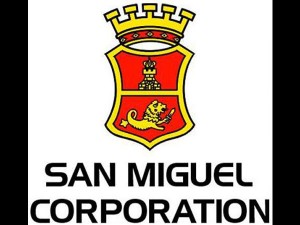SMC buying binge goes on with 8 more deals
(Last of two parts)
When Ramon Ang set San Miguel Corp. on its current path of aggressive diversification, he told an incredulous public that he would double the revenue of what was then Southeast Asia’s largest food and beverage company by 2015.
That ambitious target translates to around $20 billion in gross sales for all the units of the group.
Today, total revenues of the companies SMC is invested in already stands at $17.5 billion, with still three years to go before the self-imposed deadline.
By all indications, SMC will hit that target by the end of this year as the conglomerate is set to continue with its acquisition binge, just weeks after sealing a partnership that gave it control of Philippine Airlines.
“PAL’s annual revenues are at around $2.5 billion a year, so with that alone we have already hit our target ahead of schedule,” said Ang, who is also president and chief operating officer of SMC.
Despite this, the group is now in the process of negotiating or sealing eight other acquisition deals in various industries, chief of which is the power sector.
“We’re still in talks to buy several big acquisitions,” Ang said, hinting only that they are regional firms in the energy field, particularly in the oil and gas sector, and in mining and telecommunications. “I have seven months [left in 2012] to do this.”
Up to two of these deals may be sealed before yearend, he said, describing the acquisitions as having the potential to add another $6 billion to the group’s top line.
One of SMC’s most ambitious projects, however, is directly related to its recent investment in PAL.
According to Ang, he hopes to break ground before the year ends on a 4,000-hectare development, which will have, as its primary tenant, a four-runway international airport and a modern air terminal capable of handling as many as 100 million passengers a year.
The project will also have its own business district, a commercial and residential area, and will apply for ecozone status to accommodate locators in the manufacturing space.
It will also have its own electricity source, which will be cheaper than the present modes provided by commercial power producers.
He declined to identify its exact location, saying only that motorists can reach the destination “in 10 minutes from EDSA” using SMC’s proposed elevated roadway that cuts across Metro Manila on a north-south axis.
Ang said the project is meant to provide the country with an alternative to the aging Ninoy Aquino International Airport, which has reached the limit of its expansion, and the Clark International Airport, which is too far from Metro Manila.
“It will be a mini-city,” Ang said, saying that PAL’s base of operations would eventually be moved to that new location.
The total project cost, he said, including the elevated tollway, a modern air terminal, runways and the acquisition of land will be in the vicinity of $5 billion.
“Can we afford it? Of course we can afford it,” Ang declared.
Yet, despite all the apparent success the group has had in recent years in growing its portfolio, not everyone is a convert to the gospel of aggressive expansion that Ang preaches.
There are, in fact, a number of doubters in the local business community—all of whom declined to go on record—who question the group’s strategy, especially its reliance on leverage to finance its buyouts.
But the SMC chief is unfazed, flipping out a chart to show that the group’s ratio of net debt to earnings before interest, taxes, depreciation and amortization (Ebitda) stands at only 2.14 times—only about a third of the ratio of 6 times the group is allowed to take.
“Those people questioning the way we fund our projects are trying to make us explain things because they want to copy it. It’s as simple as that,” he said.
Indeed, the portfolio of today’s SMC is very different from what it looked like only four years ago.
In 2007, 45.3 percent of the group’s revenues came from the beverage sector, another 42.3 percent from the food business, while 12.4 percent came from packaging.
Today—excluding PAL—50.1 percent of revenues comes from the fuels business courtesy of Petron Corp., 13.1 percent from the power sector, 16.4 percent from beverage and another 16 percent from food, while packaging’s contribution has declined to 4.4 percent.
More importantly, the power sector’s contribution makes up the bulk of SMC’s Ebitda levels at 30.6 percent.
All told, the food and beverage businesses have shrunk to only about a third of SMC’s rapidly growing pie of revenues.
“Tell me—looking at where we were then and where we are now—do you believe our transformation was a success?” Ang said, throwing the question back when asked about his strategy.
Given that he has practically met the revenue target for SMC ahead of time, Ang has now set a new—more ambitious—goal for the conglomerate.
“I think we should be able to hit $30 billion in total sales by 2017,” he said. “We should surpass that again earlier.”















